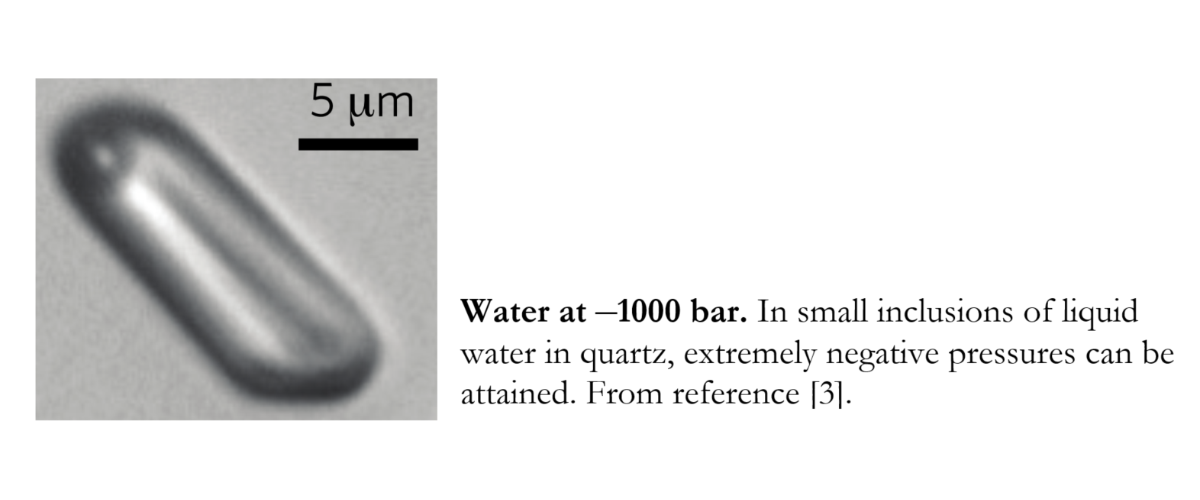 Back to Open Positions & Projects
Back to Open Positions & Projects

Water at Negative Pressure
- Supervisor: Sander Woutersen (Van 't Hoff Institute for Molecular Sciences), Daniel Bonn
- Project Type: Bachelor or Master Project
- Goal: To explore new ways of creating water at negative pressure.
- Info: Send email to: S.Woutersen
- PDF: Click here for PDF
In our daily lives (and in physics books) pressure is generally a positive quantity. But there is no fundamental reason against having negative pressure: instead of compressing a liquid (=positive pressure) you simply have to stretch it. Just put some water in an airtight cylinder and pull on the plunger! Of course, normally when you do this, the water starts to form vapor bubbles until the pressure of the liquid+vapor system is back to ambient (and thus positive). However, the vapor bubbles can only form by nucleation, typically on small contaminations in the liquid. Hence, in super-clean water, bubble formation does not occur (it is for this reason that you can heat clean water above 100°C without it starting to boil), and so negative water pressure becomes feasible. Actually experiments [1,2,3] have shown that water can exist at negative pressures down to –1000 bar! (for comparison, the pressure in a normal bicycle tire is about +2 bar).
So far, very little is known about the properties of water at negative pressure. These properties are expected to be unique, because the behavior of water at negative pressure is dominated by the attractive forces between the molecules, rather than the short-range repulsive forces that dominate the behavior of liquids at normal, positive pressure.
In this project you will explore new ways of creating water at negative pressure, and you will use spectroscopic methods to investigate its properties, both macroscopic and at the molecular level.
[1] Zheng et al. Liquids at large negative pressures: water at the homogeneous nucleation
limit. Science 254, 829 (1991).
[2] Green et al. Water and Solutions at Negative Pressure: Raman Spectroscopic Study to
-80 Megapascal. Science 249, 649 (1990).
[3] Azouzi et al. A coherent picture of water at extreme negative pressure. Nature Physics 9,
38 (2013).
